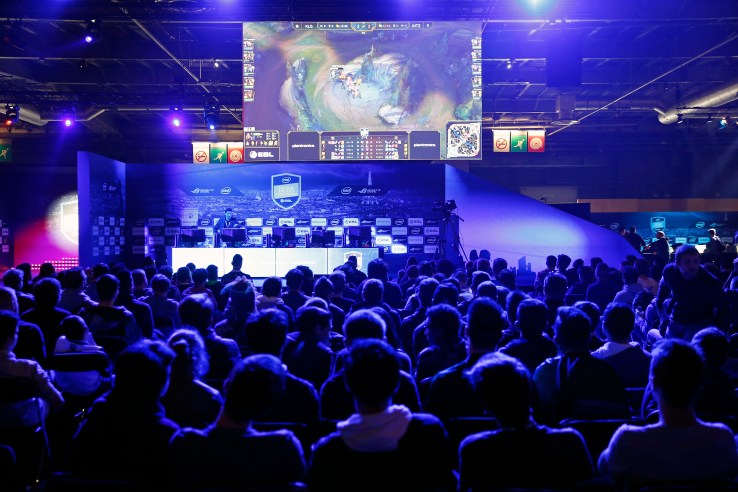The importance of streaming to e-sports – TechCrunch

There are three key ingredients for a game or pastime to become a sport: playing, competing and viewing.
From the first large-scale video game competition in the 1970s to the present day, e-sports have experienced a trajectory similar to offline sports.
Indeed, the ability to play and compete are necessary steps in the transformation from game to sport. However, broadcasting and viewing are the crucial components to enable widespread adoption and popularity. Just as with offline sports, e-sports require these elements.
The growth of a sport
It takes about 50 years for a game to become a sport. Basketball wasn’t a sport when it was invented; it was a game created by one man and played by just two teams. It wasn’t until decades later that the NBA was founded and a sport was born.
For a growing sport, having competitions aired in front of an audience is an important first step. Most sports have to rise through the ranks in terms of the type of broadcast opportunities available to them. This has been true with both e-sports and offline sports, like basketball. From 1979 to 1981, for example, CBS televised 9 of the 17 NBA Finals games in the 11:30 p.m. Eastern time slot. Of the nine games televised, six were on tape-delay.
The rise of streaming
E-sports broadcasting started as an online-only venture, and the audience was perceived to be a niche group. However, e-sports fans have quickly proven their size and level of engagement. In the last several years, we’ve seen e-sports audience sizes grow to a point where they are starting to attract mainstream media interest.
In 2014, Amazon’s Twitch recorded 100 million unique viewers per month, resulting in a 66 percent increase in viewership (from 60 million in 2013). In 2015, Twitch streamed more than 241 billion minutes, or roughly 460,000 years’ worth of content. Engagement on the popular streaming service is particularly impressive, with the average Twitch viewer logging more than 421.6 minutes per month on the platform. As an audience, e-sports viewers are highly engaged, and the total audience is expected to grow to 345 million by 2019, according to Newzoo.
For e-sports, streaming helped enable major tournaments to reach the general public, and significantly extended reach beyond live, in-person events. The e-sports industry is still growing, but viewership is already sizable — with some estimates exceeding 250 million annual viewers and more than 130 million of them being e-sports “enthusiasts.” With 2.1 billion people playing mobile games worldwide, even greater fandom is on the horizon.
SuperData Research projects that more than 213 million people will watch competitive gaming this year, with that number reaching 303 million by the end of 2019. Streaming has been instrumental in bringing e-sports to the masses, and on-demand platforms like Twitch and YouTube will continue to add value as larger stakeholders and events emerge (such as the recent Twitch tournament at the White House).
The next evolution of e-sports
E-sports represent a significant market opportunity for broadcasting companies. Tournament viewership is already surpassing that of some major offline sports. For example, 43 million people watched the final match of the “League of Legends” World Championship in 2016, while only 30.8 million viewers watched Game 7 of the 2016 NBA Finals, which was the sport’s highest total in 18 years.
The largest media networks, such as ESPN, Turner Broadcasting, TBS and Yahoo, have recognized this and started to enter the fray. In the spring of 2015, ESPN2 aired an e-sports tournament called “Heroes of the Dorm” that was hosted by Activision. ESPN’s next step was to release a dedicated e-sports issue of ESPN The Magazine in June 2015. The magazine cover featured an image of NFL player Marshawn Lynch with the title “Marshawn Lynch Brings Beast Mode to Call of Duty.”
Video game developer Valve announced in September 2016 that a “Counter-Strike” league with competitions would be aired on TBS. With larger tournaments and world championships being broadcast live on some of the top networks, e-sports are entering the realm of live television, marking a clear step in the evolution of the sport.
By 2020, global e-sports are forecast to reach $5 billion in revenue. This is not surprising, given the fact that wherever consumers go, media and brands will follow. The e-sports industry is reaching the inflection point that the NBA saw decades ago, and widespread viewership is providing the final step for this formerly niche activity to become a true sport.



